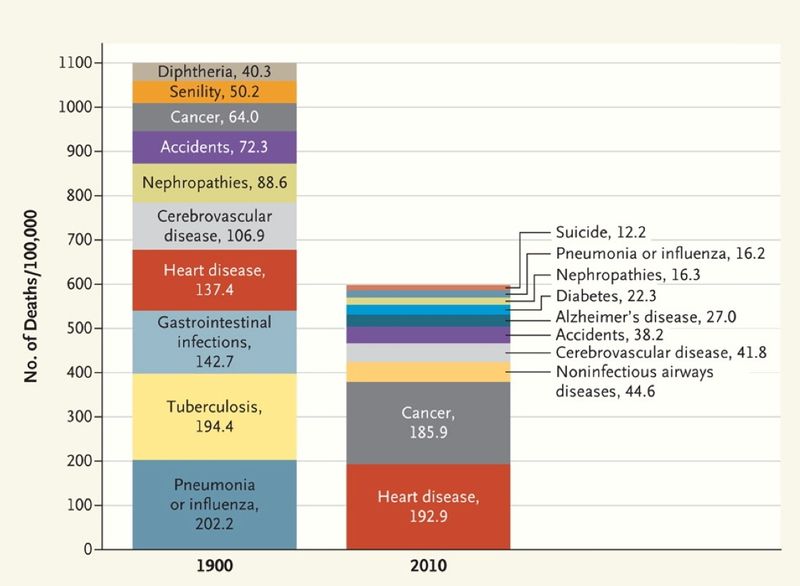What kills us, in one chart
(Chart via The New England Journal of Medicine)
Taking the long view, the New England Journal of Medicine looked back over a century to see how the causes of death in America have changed.
As you’ll notice, chronic killers (such as cancer and heart disease) gain prominence, and so do other diseases of aging (Alzheimer’s). As medicine and our understanding of the germ-theory of disease progressed, deaths from infectious agents (tuberculosis and pneumonia) fall away.
But, the authors caution, there’s reason to temper optimism: what kills us will continue to change — and medical advancements may not keep up. “An obesity epidemic, feared in 1912, has come to pass,” they write. The climb in life expectancy stalled around the turn of the millennium — and may even be reversed. If we want to continue to progress, health systems need to adapt to the new reality:
In many respects, our medical systems are best suited to diseases of the past, not those of the present or future. We must continue to adapt health systems and health policy as the burden of disease evolves. But we must also do more. Diseases can never be reduced to molecular pathways, mere technical problems requiring treatments or cures. Disease is a complex domain of human experience, involving explanation, expectation, and meaning. Doctors must acknowledge this complexity and formulate theories, practices, and systems that fully address the breadth and subtlety of disease.
[H/T: Vox]




